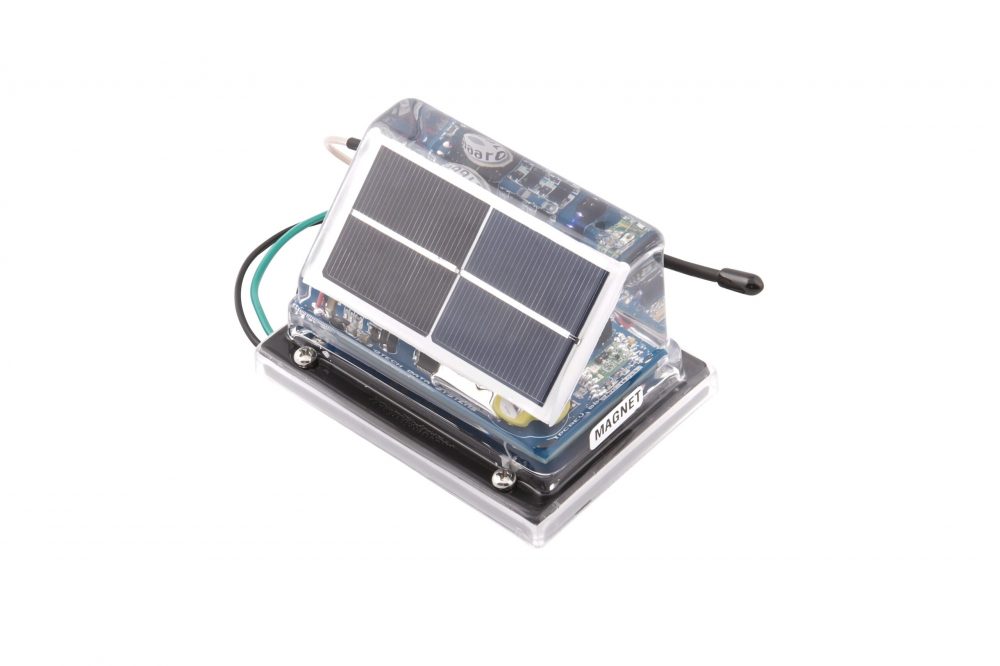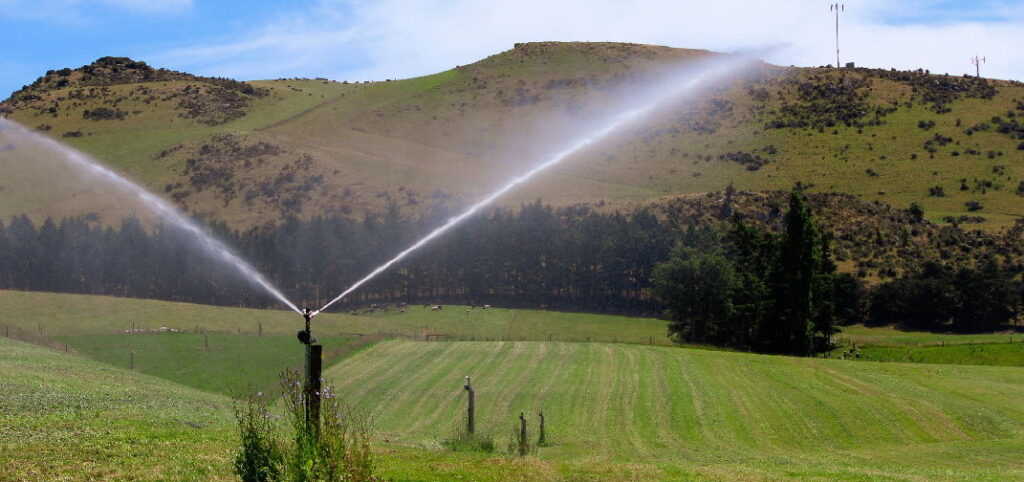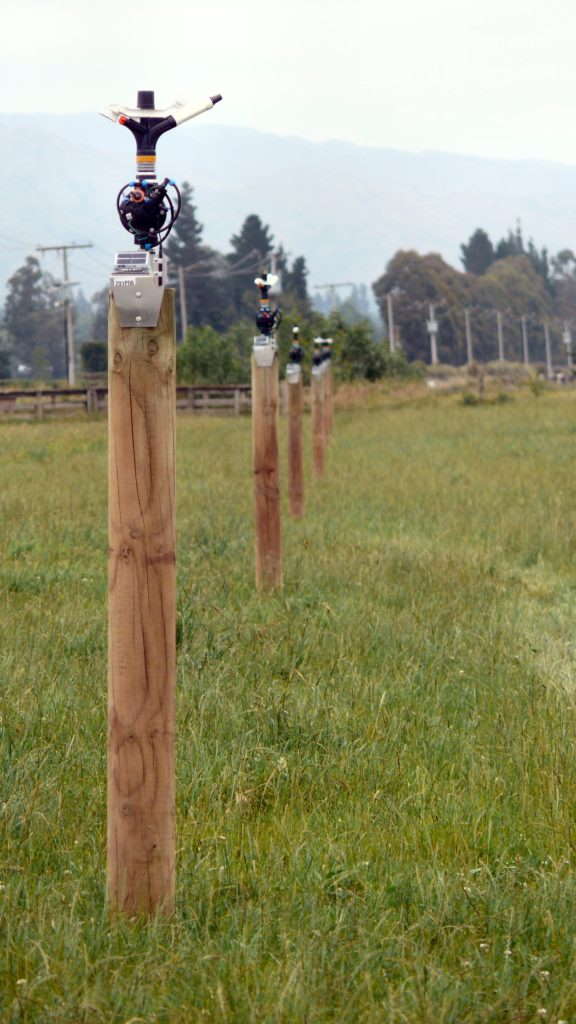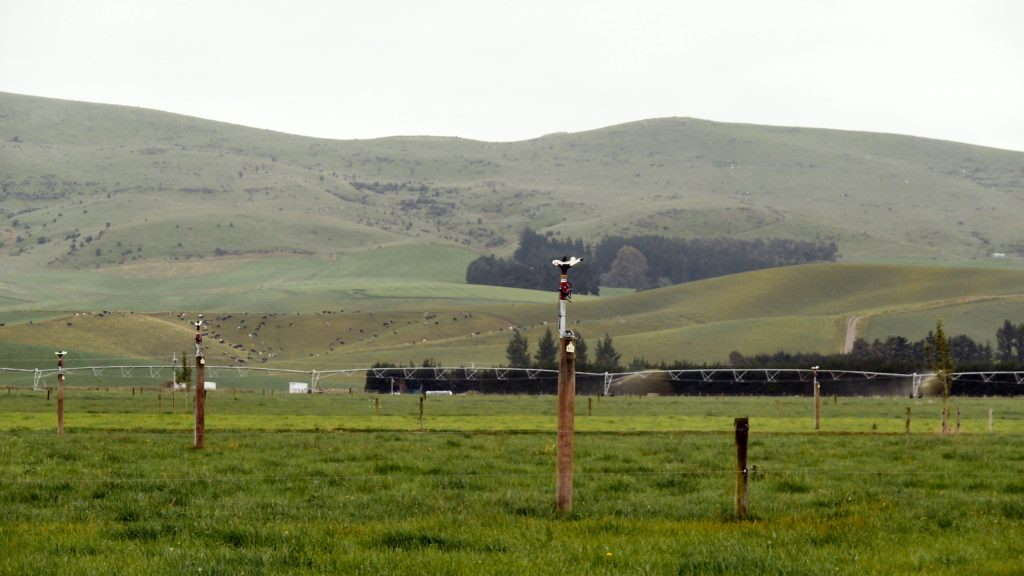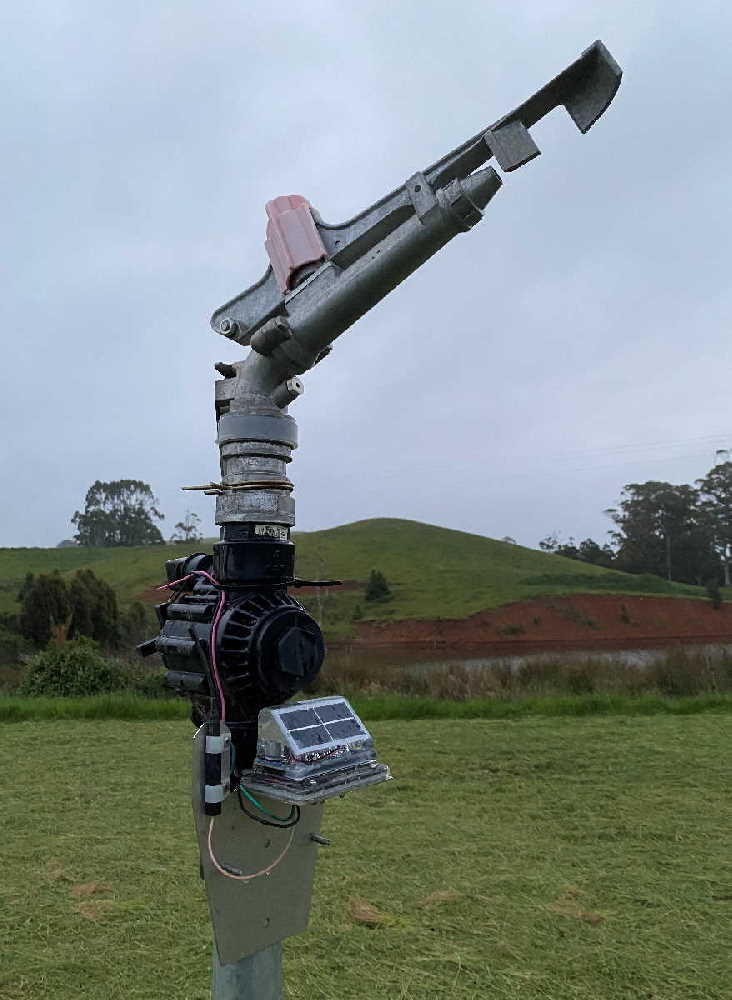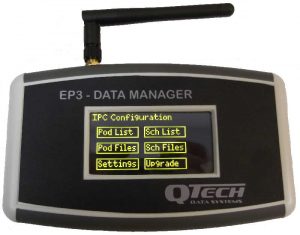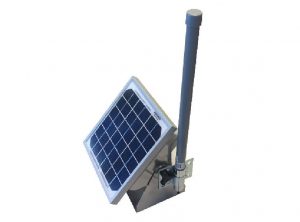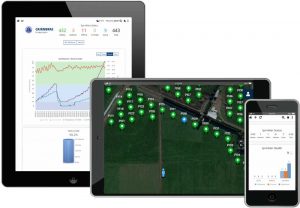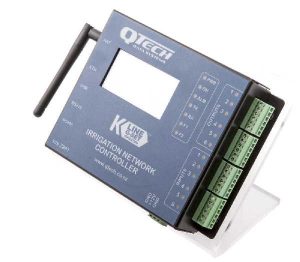Irrigation Point Controller (IPC)
The IPC is a unique, intelligent, solar powered, solid set sprinkler controller. It is managed remotely by mesh radio and is completely autonomous in its function. It works with solid set irrigation, fixed grid irrigation sprinklers or G-Set irrigation pods.
The IPC is a standalone, programmable timer-based solid set sprinkler controller. It controls the valve at each of the solid set irrigation sprinklers and is solar powered with an internal, replaceable battery.
It is cleverly designed to operate an electrically driven solenoid latching valve, thereby turning the water on and off.
The IPC is configured to an irrigation schedule that most benefits the water distribution and the environment, with up to 16 switching events during a pre-defined operating cycle: generally once or twice a day for the specified watering duration.
At the end of the operating cycle, it simply starts the process again. This continues until a change is made to the schedule. The cyclic operation runs without any external interference, providing the farmer with complete flexibility through its scheduling. The IPC is designed to reliably regulate water with optimum benefit of both water and ground conditions.
Where should an IPC be positioned?
To obtain the best results, the key is to the orientate to the sun:
- In the Southern Hemisphere, the IPC should be positioned so that it faces north.
- In the Northern Hemisphere the IPC should be positioned so that it faces south.
If there are trees, hedges or foliage that may impede the correct-facing site, the IPC should be oriented towards the best sun position. If the internal battery level drops too low due to poor solar (sun) conditions, the IPC will automatically switch into hibernation mode which preserves the battery but continues its watering schedule.
How is the IPC managed?
The IPC is smart and communicates externally by an integral ISM band radio. The EP3 is used in one-on-one communications with the IPC or, the INC communicates to the IPC network. The mesh network protocol used for radio communications, means an IPC can be updated even when it is out of direct line of sight. Changes to the system when controlled by QTech’s IMS are distributed network-wide across the mesh radio network.
How is the IPC protected from the weather?
The IPC is completely protected from the weather with an external wraparound plastic cover. It is packaged so that the internal solar panel is angled to get the best energy input from the sun throughout the year. This maintains the fully enclosed lithium polymer battery and enables the IPC to work effectively even in low sunlight winter months.
Key Features
- Solar panel & lithium polymer storage battery (1500mAh)
- Fully encapsulated electronics making the IPC completely waterproof
- Processor controlled device
- Latch solenoid operation
- Real time clock/calendar incorporated into design – high accuracy
- Suitable for solid set irrigation, fixed grid irrigation and G-Set irrigation systems
- Maximum 255 minutes per irrigation event and up to 16 operational slots per cycle
- Field replaceable battery
- International useable ISM band (900MHz) mesh radio
- Autonomous operation
- Option for SMS control
- Range extendibility by repeater modules
Major Benefits
- Simple operation
- Low maintenance – electronic components are encapsulated
- Low running costs – connected to a renewable power source
- Lower through-life costs with solar and internal battery
- Independent IPCs – reduces the risk of one device causing a complete system failure
- Significantly improved irrigation and pasture growth
- Sustainable and appropriate for managing the environment
- Remote management
Visit www.waterinsight.co.nz for more information or contact us.

